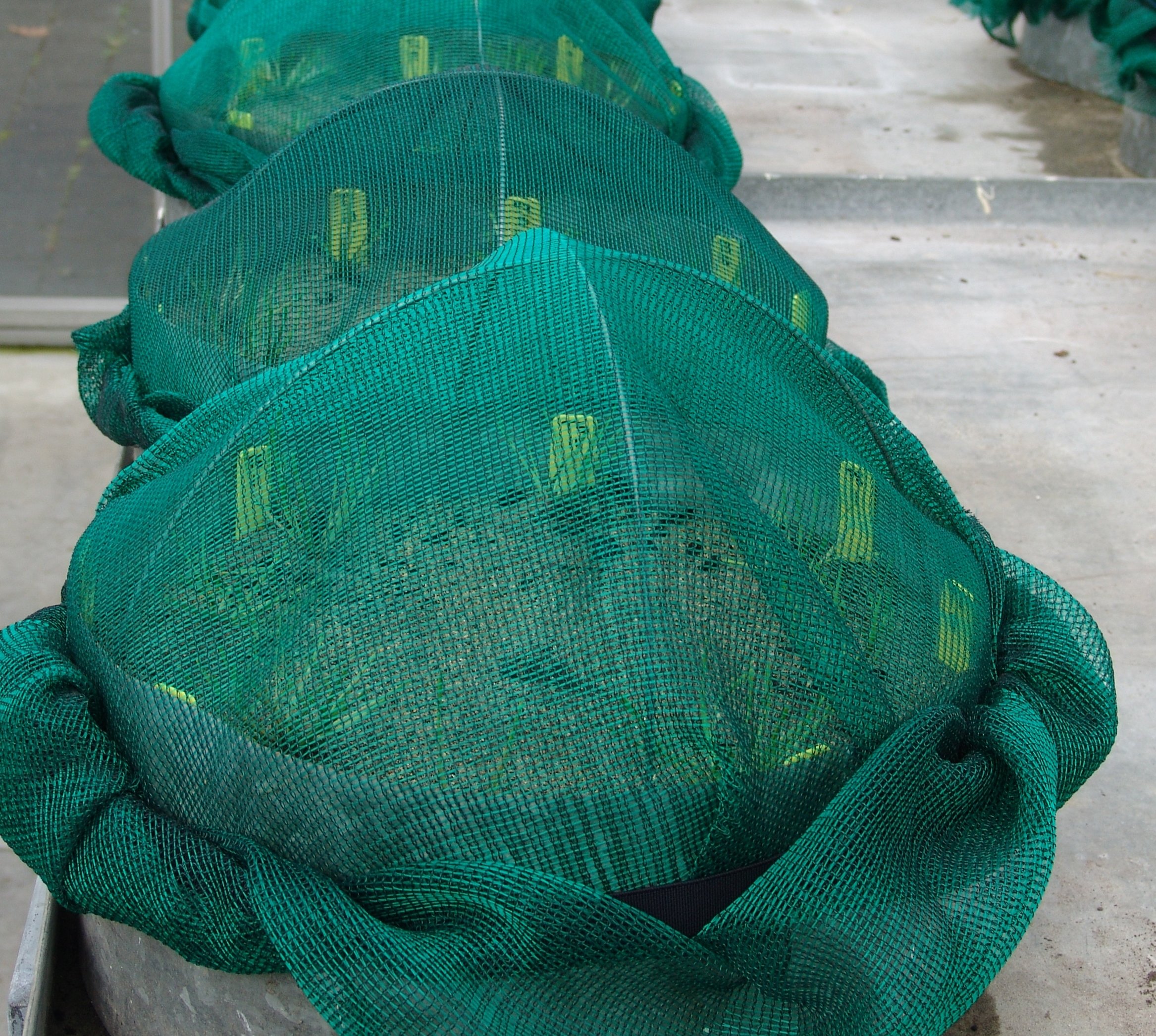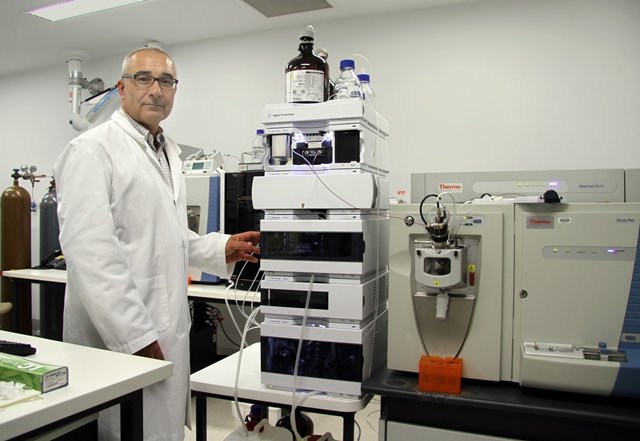The lab in question is AgriBio, a joint agricultural bioscience R&D venture between La Trobe University in Melbourne, and the Victorian government, by way of the Department of Economic Development, Jobs, Transport and Resources.
Since 2006, scientists there have been working with NZ plant breeder Barenbrug to discover and develop the next generation of endophytes for NZ pastures.
Endophytes are essential for pasture persistence on NZ farms. They are fungi that have evolved to live in harmony with ryegrass, producing natural compounds which protect their host plants from pests like Argentine stem weevil and black beetle.
Such insect control is natural, in-built and lasting, as opposed to synthetic chemicals, but care is needed with endophytes because they also affect livestock health.
(That’s where those overgrown ryegrass paddocks at Lincoln University come in, along with insect and persistence trials).

Testing for black beetle. In each plot are 6-8 plants, each with a different endophyte. Black beetle are placed in each pot to see which endophyte they do or don’t like to feed on.




%20vs%20WE%20endophyte%20first%20summer_8%20Feb%202011_300.jpg?height=1482&width=2329)
.jpg?height=2160&width=3240)